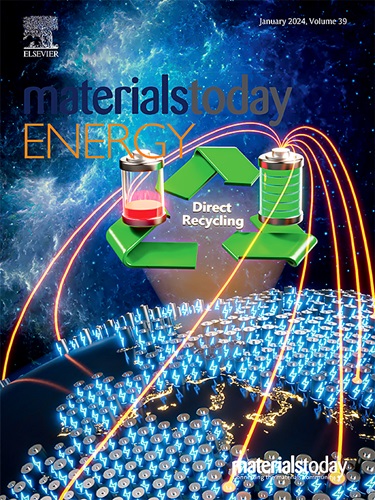Advances in solid oxide fuel cell technologies: lowering the operating temperatures through material innovations
IF 8.6
2区 材料科学
Q1 CHEMISTRY, PHYSICAL
引用次数: 0
Abstract
Solid oxide fuel cells (SOFCs) are promising for clean energy generation due to their high efficiency, fuel flexibility, and status as a clean energy source with no environmental hazards. However, the challenge of operating these SOFCs at elevated temperatures (800–1000 °C) presents significant hurdles regarding material selection, cost-effectiveness, and device fabrication. Lowering the operational temperature of SOFCs can enhance performance and economic viability. Nevertheless, this pursuit introduces challenges in the form of increased ohmic and polarization resistances, which detrimentally affect electrochemical performance. High ohmic resistance and activation energy at lower temperatures reduce ionic conductivity and impede SOFC device efficiency. Recent advancements in materials and cutting-edge technologies have addressed these issues, particularly in low-temperature operations for SOFC devices. This review article focuses on the latest developments in material selection and advanced technologies that have demonstrated notable improvements in power output and long-term durability at lower operating temperatures, highlighting the significance of high-performing electrolyte and electrode materials with enhanced electrochemical and fast electrocatalytic functionality to improve cell efficiency. Additionally, the article explores the significant obstacles encountered by SOFCs at low operating temperatures.固体氧化物燃料电池技术的进步:通过材料创新降低工作温度
固体氧化物燃料电池(SOFC)效率高、燃料灵活,而且是一种无环境危害的清洁能源,因此在清洁能源发电方面大有可为。然而,在高温(800-1000 °C)条件下运行这些 SOFC 面临着材料选择、成本效益和设备制造方面的巨大挑战。降低 SOFC 的工作温度可以提高性能和经济可行性。然而,这种追求也带来了挑战,即欧姆电阻和极化电阻的增加会对电化学性能产生不利影响。较低温度下的高欧姆电阻和活化能会降低离子传导性,妨碍 SOFC 设备的效率。材料和尖端技术的最新进展已经解决了这些问题,特别是在 SOFC 器件的低温操作方面。这篇综述文章重点介绍了在材料选择和先进技术方面的最新进展,这些技术在较低的工作温度下显著提高了功率输出和长期耐用性,突出了具有增强电化学和快速电催化功能的高性能电解质和电极材料对提高电池效率的重要意义。此外,文章还探讨了 SOFC 在低工作温度下遇到的重大障碍。
本文章由计算机程序翻译,如有差异,请以英文原文为准。
求助全文
约1分钟内获得全文
求助全文
来源期刊

Materials Today Energy
Materials Science-Materials Science (miscellaneous)
CiteScore
15.10
自引率
7.50%
发文量
291
审稿时长
15 days
期刊介绍:
Materials Today Energy is a multi-disciplinary, rapid-publication journal focused on all aspects of materials for energy.
Materials Today Energy provides a forum for the discussion of high quality research that is helping define the inclusive, growing field of energy materials.
Part of the Materials Today family, Materials Today Energy offers authors rigorous peer review, rapid decisions, and high visibility. The editors welcome comprehensive articles, short communications and reviews on both theoretical and experimental work in relation to energy harvesting, conversion, storage and distribution, on topics including but not limited to:
-Solar energy conversion
-Hydrogen generation
-Photocatalysis
-Thermoelectric materials and devices
-Materials for nuclear energy applications
-Materials for Energy Storage
-Environment protection
-Sustainable and green materials
 求助内容:
求助内容: 应助结果提醒方式:
应助结果提醒方式:


